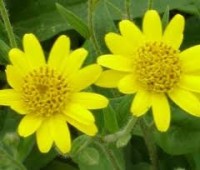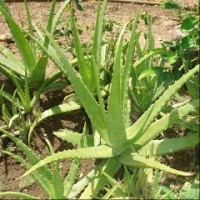AMARANTH
 Information
Information
Amaranth also known as Lady Bleeding is part of the Amaranthaceae plant family.Grows in the tropics, mainly in tropical America, India, Africa, Java.
General Information
Botanical Name: Amaranthus spp. including Amaranthus hypochondriacus, Amaranthus caudatus, Amaranthus melancholicus
Common Name: Lady Bleeding, Love-lies-bleeding, Lovely Bleeding, Pilewort, Prince's Feather, Red Cockscomb, Spleen Amaranth, Velvet Flower, Amaranto, Quelites
Plant Family: Amaranthaceae
History: The name is from the Greek for 'unwithering' .
It was used by Native Americans:
-as an antidote to snake poison
-for contraception
-to stop menstruation
Plant Constituents of Amaranth
Contains:
-mucilage
-sugar
Action: This varies from species to species and can be:
-alterative [an agent capable of favorably altering or changing unhealthy conditions of the body and tending to restore normal bodily function, usually by improving nutrition]
-astringent [a binding agent that contracts organic tissue, reducing secretions or discharges of mucous and fluid from the body]
-diaphoretic [an agent that promotes perspiration]
-diuretic [an agent that increases the volume and flow of urine which cleanses the urinary system]
-stimulant [an agent that excites or quickens the functional activity of the -tissues giving more energy]
tonic [an agent that tones, strengthens and invigorates organs or the entire organism giving a feeling of well-being]
Back to the Top
Usage of Amaranth
Medicinal Part used: The flowering herb
Amaranth
-was sacred to the god Artemis
-was used as a symbol of immortality to decorate images of gods and goddesses and tombs
-was used in pagan burial ceremonies
-was used in spells for immortality
-was used to repair a broken heart
-when woven into a wreath it was said to make the wearer invisible
-guard against evil
-help prevent burns and mishaps while cooking
-prevent household accidents
Amaranth is commonly used for:
Blood Conditions
-hemorrhages, especially bowel
-spitting of blood
Female Conditions
-menorrhagia (excessive menstruation)
Gastrointestinal Conditions
-diarrhea
-dysentery
-gastroenteritis
-stomach influenza
Respiratory Tract Conditions
It can be used as a gargle for:
-ulcerated conditions of the throat and mouth
Applied externally it can:
-be used as a wash for sores and ulcers
-be used for tick bites
-reduce tissue swelling from sprains
and is used as a douche for:
-leucorrhea
Dosage:
Recommended dosage is as follows:
Tea:
Make an amaranth tea as follows. Bring 3 cups of water to a rolling boil, add 2 tsp of seeds. Cover and simmer for 5 minutes on low heat. Remove from heat and add 1 tsp of leaves, if available or let it steep for 30 minutes. Drink 2 cups of this tea daily for internal problems.
Oil dosage:
For internal use drink down twice a day one teaspoon of amaranth oil, or add to cold dishes (dairy products, salads, etc.) In case of higher influences listed above it is possible to increase the dosage to 1 – 2 teaspoons three times a day.
Precautions
Caution:
-Not to be used by pregnant or lactating women
-Care with cold deficient spleen stomach. (Weak digestion)
Drug Interactions:
Do not use Amaranth without first talking to your practitioner or healthcare provider if you taking any of the following medications:
-None known
[AD]











